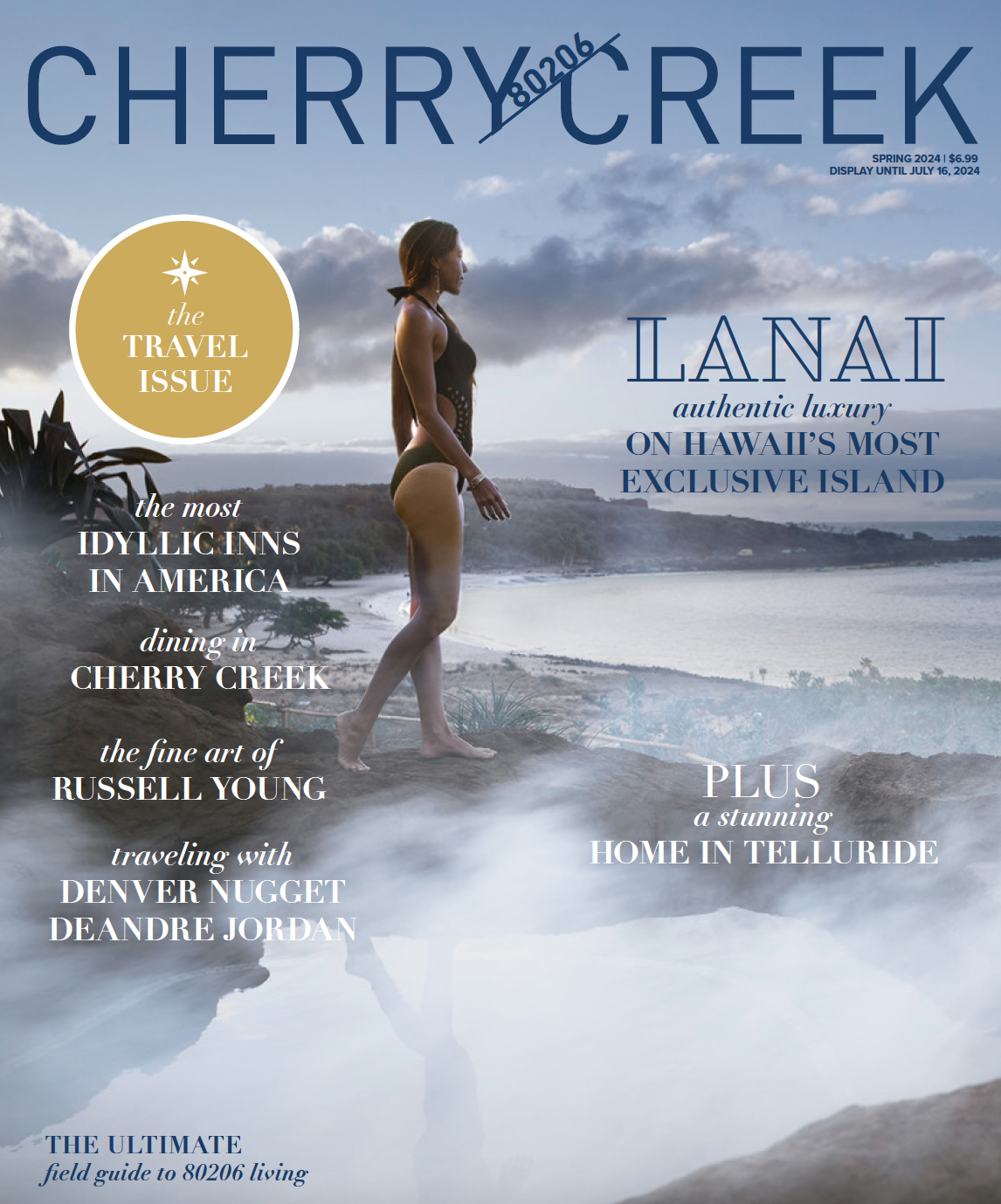Dining
A Star is Born
Cherry Creek and the Colorado restaurant scene recently joined the most exclusive culinary club on the planet. The world-renowned Michelin Guide strapped on its hiking boots and has climbed up into our world of mile high dining. Membership has its privileges. So, what are those privileges? We went behind-the-scenes with the people who made this happen and those who know a thing or two about the Michelin Guide to find out what’s next.
Was André Michelin about to get sick to his stomach out in the middle of the French countryside?
His beloved passion project that he authored with his brother Edouard was a small red guide filled with handy information for the travelers of France. And it was being grossly misused at this tire shop that he had just popped his head into. The co-founder of Michelin Tires was staring at his guides propping up a workbench. Something had to change regarding the respect for these guides, and, unbeknownst to the Michelin brothers at the time, their changes would revolutionize the restaurant industry.

André Michelin
For all we know, between the two of them, André and Edouard didn’t have a culinary bone in their body. And if they did have a to-die-for boeuf bourguignon recipe, the public wasn’t aware of it. They were all about where the rubber meets the road with the nearly 3,000 automobiles in France in 1889, when they founded their now world-famous tire company. The travelers’ guide that they had produced consisted of maps, gas station locations, how to change a tire, and other adventures for those traveling by car. The last thing that they saw their guide intended for was to help aid the stability of a workbench.
So, they changed things up. In the 1920s, the guide would include a list of hotels in Paris and lists of restaurants according to specific categories. As the restaurant section of the guide grew in scope and in popularity, the brothers enlisted the aid of dining inspectors who’d visit and review restaurants anonymously. In 1926, the guide began to award stars to fine dining establishments, initially marking them only with a single Star. Five years later, a hierarchy of zero, one, two, and three Stars was introduced, and, in 1936, the criteria for the starred rankings were published.
During the rest of 20th century, a star was born.
The Michelin Guides became best-sellers, and present day sees ratings for over 40,000 establishments in over 24 territories across three continents, and more than 30 million Michelin Guides have been sold worldwide since.
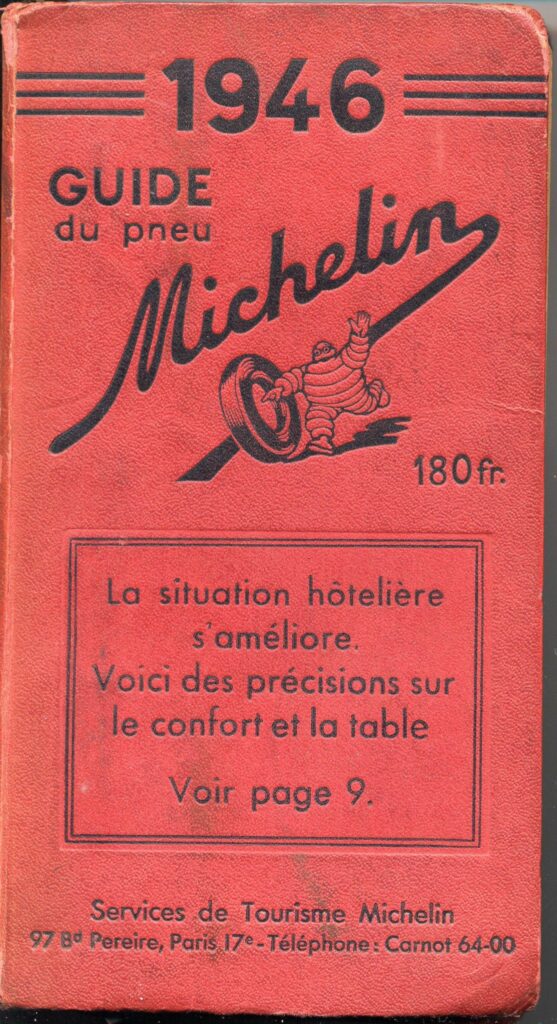
Here in the United States, it acknowledges the best restaurants in California, Chicago, Georgia (Atlanta), New York, Florida (Orlando, Miami and Tampa), and, as of 2023, right here in Colorado, covering Aspen, Snowmass Village, Vail, Beaver Creek, Boulder, and Denver.
For those embedded in the Colorado culinary landscape, partnering with Michelin is exciting more than it is surprising. The quality and consistency of the food coming out of here has been remarkably steady, with some of the state’s top chefs considered among the best in the nation. Over the past several years, Denver, in particular, was finding itself mentioned in the same breath as perennial top tier food destinations like New York, Chicago, and Los Angeles.
So, how did this all happen with the Michelin Guide?
It started with a basic inquiry from Colorado Restaurant Association (CRA) CEO and Director, Sonia Riggs, keeping true to the old adage, “If you don’t ask, then you don’t know.”
“We’ve had countless restaurant guests ask why we didn’t have Michelin in Colorado,” Riggs begins. “So, I connected with Michelin to see how their process worked. The Colorado Tourism office was interested in pursuing it, so I made the introduction and they took it from there.”

Fruition Restaurant
With the baton being handed off, it was now Colorado Tourism Director Tim Wolfe’s race to run. “It was a huge collaboration between our office, our Board of Directors, CRA, and then those DMOs (destination marketing organizations) around the state,” Wolfe explains from his Denver office. “Our role was to brand the entire state and the program, and to bring everyone together and make sure that they knew what the opportunities were.”
Wolfe and his team had to decide how they were going to put this together, so they looked at Florida as a template because of their prior success with the Michelin Guide in Orlando, Tampa, and Miami. But what about the folks at the Michelin Guide? Where did Colorado’s potential French partner’s desire register on dining in the Rockies?
Gwendal Poullennec, International Director of the Michelin Guides, has the answers, “Along with initial conversations with the Colorado Restaurant Association, Michelin had its inspection team conduct a destination assessment. The inspectors determine whether an area’s culinary scene is developed enough for a Michelin Guide selection of restaurants. They were impressed to find a world-class culinary offer that was strong enough to become the sixth Michelin Guide destination in the U.S., and Colorado also showed potential for growth as well.”
“This is the starting point,” Wolfe impresses. “I believe this is going to elevate Colorado’s status as a global dining destination, showcasing the state’s unique flavors, our commitment to sustainability, and the innovation of the culinary industry. The bounce back from pre-pandemic levels with international travelers is only 80 percent, so to be able to market the Michelin Guide on an international stage is huge – especially to Japan, the U.K., and Germany.”
Here we are. Part of the most discerning restaurant guide in the world. So, how do you get a Star? How do you get two Stars or three Stars? What’s a Green Star or a Bib Gourmand? Poullennec breaks it all down.
“The Michelin Guide is unique, thanks to its universal and historical methodology. Over the Guide’s 120 years, restaurants are still assessed based on five universal criteria, focused on the quality of cuisine, and only the cuisine: 1) Quality of products, 2) Mastery of cooking technique, 3) Harmony and balance of flavors, 4) Personality of the chef as expressed in the cuisine, and 5) Consistency between visits and throughout the menu. That’s how we ensure that Michelin Stars have the same value worldwide from Paris to Tokyo to Colorado.”
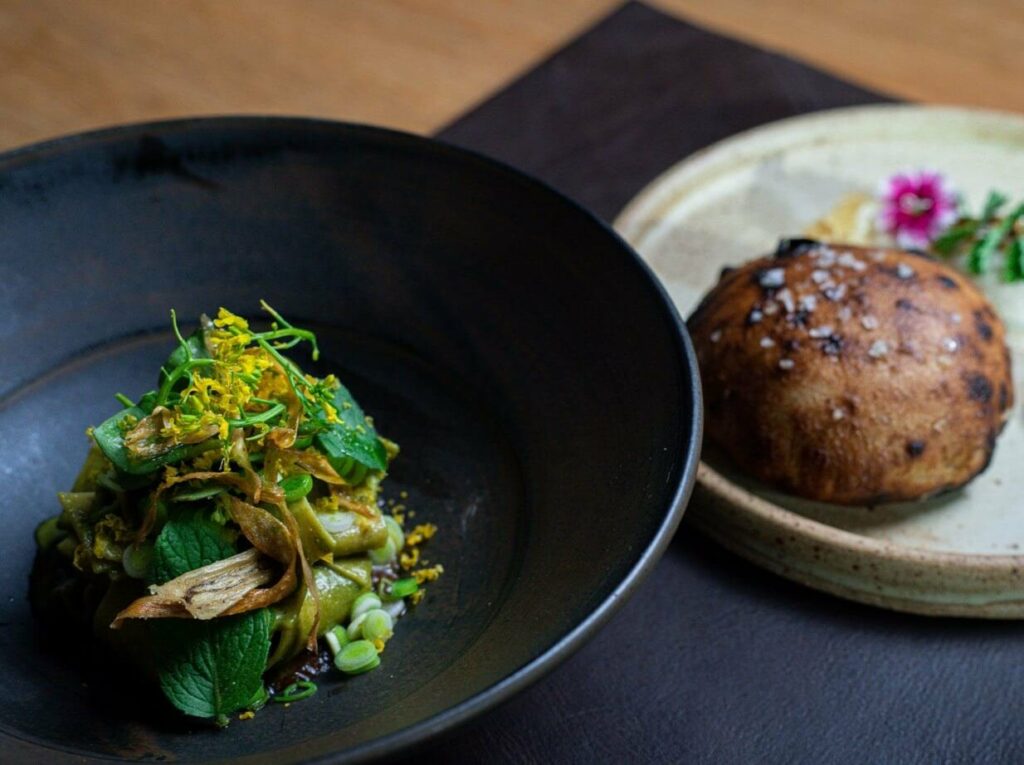
Star Winner The Wolf’s Tailor
Poullennec goes on to explain that in 1926, the Michelin Guide began awarding Stars. At that point, all a restaurant could earn was a single Star. Five years later, it changed to One, Two, and Three Michelin Stars. One Star means “high quality cooking, worth a stop.” Two Stars mean “excellent cooking, worth a detour.” Three Stars are for restaurants with “exceptional cuisine, worth a special journey.” Also worth noting is that the Michelin Star is given to a restaurant as a whole, not just a chef.
In addition, the Bib Gourmand distinction was introduced in 1997 to honor restaurants offering “exceptionally good food at moderate prices.” In 2020, the Michelin Green Star was introduced for restaurants that are role models in sustainable gastronomy. It’s not a culinary distinction, but a complementary one, to encourage restaurants and stimulate the sector in their commitment to sustainability. Every restaurant from the Guide’s selection – regardless of its culinary distinction – can receive a Green Star if their involvement in sustainable gastronomy is particularly impressive and inspiring. The term “Recommended” means a restaurant is recommended by the inspectors. It’s listed on Michelinguide.com as part of the Guide’s selection of restaurants, but it has no specific award distinction, such as a Star or a Bib Gourmand award.
Meanwhile, we haven’t even scratched the surface on how Colorado’s chefs and restaurateurs feel about all of this. It’s a mixed bag of elation, ambivalence, and caution, depending on whom you talk to.
Take Alex Seidel, for example. The internationally renowned chef and proprietor of Fruition and Mercantile Dining & Provision is no stranger to prestigious awards. Recognized by The James Beard Foundation and Food & Wine among countless others, he was clear with his thoughts on the Michelin Guide in Colorado, “The restaurants aren’t for awards,” Seidel concedes while sitting at a corner window table in Fruition. “It’s not what gets me excited. That’s not why I wake up every day and it’s not why I got into cooking. I love to cook, and I love to make people happy.”

Chef Alex Seidel
Seidel’s Executive Chef at Fruition, Jarred Russell, has a different take, “I was surprised. There are only six spots in the U.S. Obviously it’s an exciting time and it’s going to push more people to do more things whether that’s the right reason to do them or the wrong reason. It will attract more people to come in here.”
Just down the street from Fruition at Barolo Grill, Director of Operations Ryan Fletter was also surprised by the announcement of the Michelin Guide coming to Colorado. “I frankly thought that Texas and some other states with big markets would be considered before us, so I was quite shocked,” he admits. “And then to hear that they may have already been here, it’s really quite nice to have an objective approach instead of, “OK. They’re coming. Let’s start preparing or do things differently.”

Juan Padro, CEO of The Culinary Creative Group which includes Michelin restaurant honorees Mister Oso, Ash’Kara, and A5 Steakhouse, was a big proponent of Colorado becoming the newest member. “The Michelin Guide brings a lot of attention to the culinary scene wherever it is. I was in favor of it coming to Colorado and I thought it would be good for Denver. I think Denver, nationally in particular, doesn’t get the credit it deserves as a culinary destination, and I think Michelin will help with that. Denver will continue to get better because of it.”

Juan Padro of Culinary Creative Group
Troy Guard, Executive Chef and Founder at TAG Restaurant Group, shares, “I’ve lived overseas for a long time, so the be-all and end-all is the Michelin Guide. It represents great chefs and restaurateurs, and it’s the premier crop of everything. When I heard it was coming to Colorado, I was excited because it shows that Colorado is doing well.”
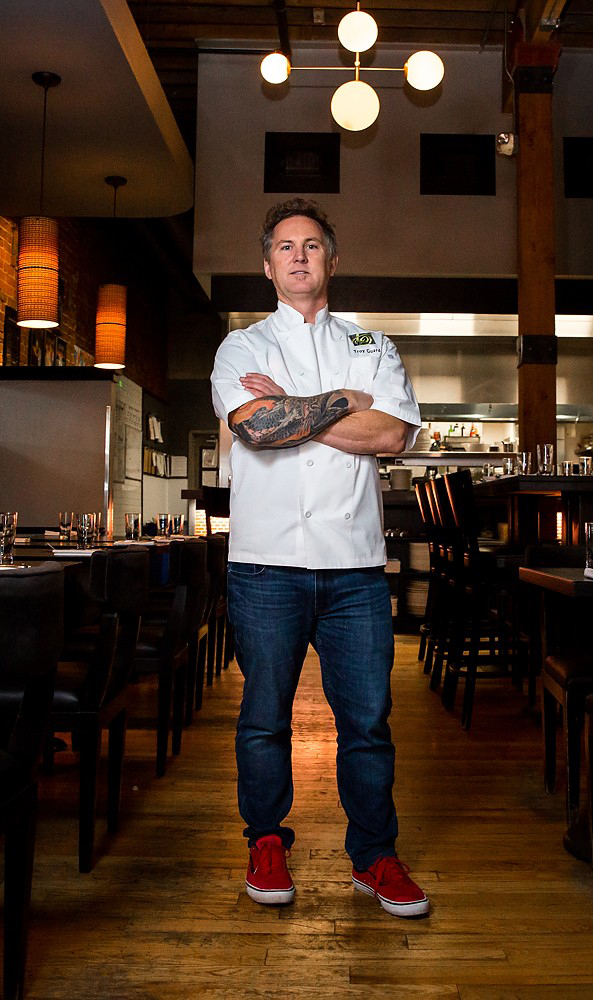
Chef Troy Guard
With a resume that includes being a part of three different Michelin Star restaurants in Chicago, Jon Keeley, Executive Chef at Narrative at The Jacquard in Cherry Creek, sees Colorado’s inclusion as a big tip of the cap to the region. “It means that Denver is a food city on the rise because the Michelin Guide is, bar none, the premier guide for restaurants and hotels in the world. The fact that we already have Stars and Bibs here in Denver means that Michelin has been watching us for a few years.”
Now that there are major, restaurant-changing awards involved, do chefs here continue to run their own race, or do menus change and are more risks taken to contend for next year’s accolades?
Riggs has some intel on that. “We’ve already been hearing from some of our member restaurants that they’re going to up their game, and Michelin has told us that’s what they tended to see in other states in the first year. Michelin areas have also attracted not just chefs, but all restaurant employees who want to be in that kind of dining environment.”
“Some restaurants will want to aspire to be recognized as a Star-rated restaurant. Others will be looking at their sustainability. I think it helps us attract some of the top culinary talent to Colorado,” adds Wolfe.
However, there are plenty who won’t be altering anything for the Guide. “You start to get caught up in those things, and it doesn’t serve anyone,” Seidel advises. “So, we will always continue to do the things we do. We never really shout from the rooftop about what we do. We just quietly do them and try to do them well and that’s really what it’s all about.”
Russell concurs, “It’s not going to change what we do. We’re not going to be chasing after it. All of a sudden, we’re going to be doing all these foams and weird stuff? No. That’s not what we do here or who I am. But we’ll always grow and continue the pursuit of deliciousness.”
Barolo Grill will also continue to stick to the plan that has gotten them to where they are. “It really feels like we should keep doing what we’re doing. It’s kind of like changing your name or changing your flight path,” says Fletter. “If it encourages and increases your product, which we’ll do anyhow, then yes, but not with the mission to obtain status.”
Padro is very straightforward in warning of the stressors and pitfalls in chasing Michelin awards. “There’s a lot of pressure once you get a Star to try and get a second Star. Once you get a second Star, to try and get a third Star, or just trying to keep the Star you have because it does make a difference to your business. But for me, I don’t open restaurants to win Stars. I am eternally grateful for the recognition, but we open restaurants for our activism, our equitable business model, and our community in Denver. So, that’s our priority.”
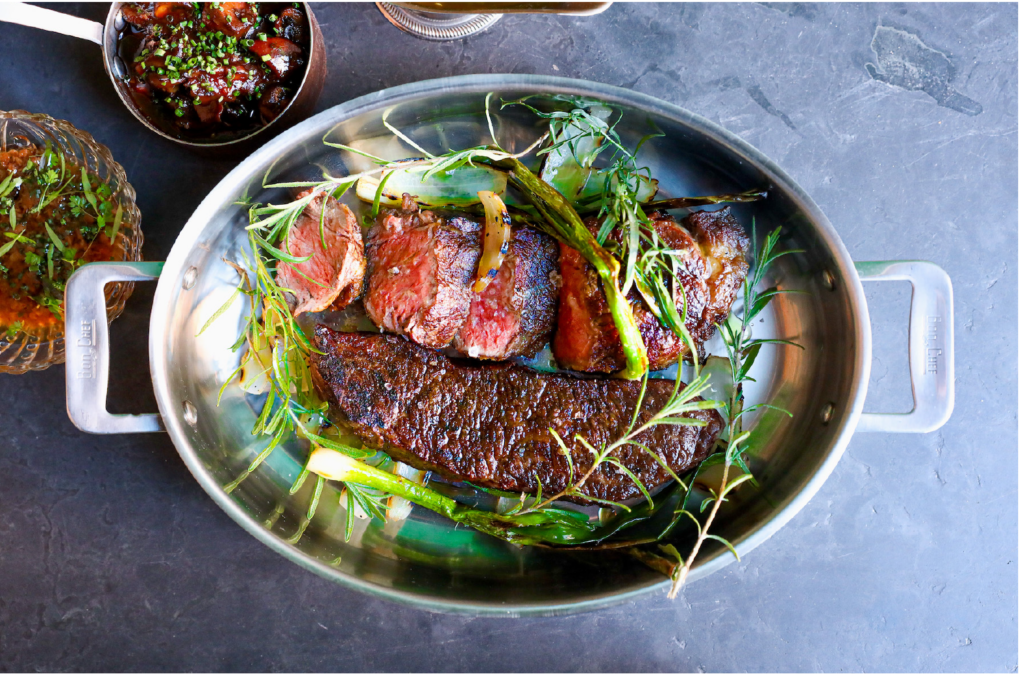
A5 Steakhouse
Guard admits that he’s been down this award road before. “As a younger chef, I chased after accolades. It’s not all that. Believe in yourself. Believe in what you put together and, sure enough, we got recognized for one (with Guard & Grace) without even putting ourselves out there, so that is a tremendous feat. When you start doing things for other people and recognition, you can get lost and get yourself burned, so I just focus on having the best ingredients, try and use as much local as possible, provide great service, and a great vibe. Those are my three things: food, service, and vibe.”
Keeley adds, “As chefs, we are always evolving and we’re always trying to push ourselves, but I think it’s really important to cook for your guests, your team and the culture you have within your establishment. If you try to please everyone then you end up pleasing no one, so stay within your comfort zone. I cook for what’s in my passion, what’s in my heart, and what’s in my head. I think that’s the level of what Michelin is looking for anyway.”
One aspect everyone seems to agree on is the effect that the Michelin Guide will have on Denver and Cherry Creek.
Seidel says, “There’s going to be a good opportunity to push the envelope and reach for higher standards and find more tweezers in your knife bag.” While Fletter contends, “I really think the Michelin Guide will elevate the entire dining scene. I’m assuming it will be infectious and others will improve. Our job here is to be the ambassadors of the moment. We are the only Michelin-recommended restaurant in Cherry Creek. We are in the Cherry Creek community. It forces all restaurants to keep doing what we’re doing. I hope more of my colleagues are included in the rounds ahead.”

Matsuhisa Denver
“We were really surprised that there weren’t restaurants that were recognized in the Cherry Creek area like Matsuhisa and Le Bilboquet,” Riggs expresses. “I’m hoping we’ll see more recognition in the future. I think Cherry Creek has amazing potential. It feels like it’s going nowhere but up, and I feel there will be restaurants there in the future that will be recognized by Michelin.”
Wolfe is excited that Michelin’s presence will elevate restaurants that aren’t in the Guide, with food experts coming into Colorado to try all the different types of restaurants. Riggs has heard that it’s not just the restaurants that get the Stars or get recognized by Michelin that benefit from this – it’s really the entire restaurant scene that will be visited.
Guard points out that Cherry Creek has exploded with business travelers, tourism, and the locals, and that there are quite a few restaurants from outside the state coming in as well as local restaurateurs setting up shop. Keeley encourages everyone in Cherry Creek to push that envelope. “Take your comfort zone and elevate it a touch. Then that becomes your new comfort zone, so you can keep doing that as a chef and still be true to who you are, but also grow and educate your guests.”
And while they weren’t purposefully going after an award, some of these restaurants not far from Cherry Creek took home some hardware. So, what are their thoughts on catching Michelin’s eye? “What is most exciting for me is for the recognition of my team because they work so hard,” Seidel explains with both Fruition and Mercantile Dining & Provision landing on the Recommended List. “It’s just a hard business period. To achieve the quality and consistency over and over is not any easy feat. People put a lot of effort and passion and thoughts and nightmares and dreams, and all these things come together, so that’s what it’s cool for. Chef Jarred certainly thought we were deserving of a Star. I just don’t really think about that.”
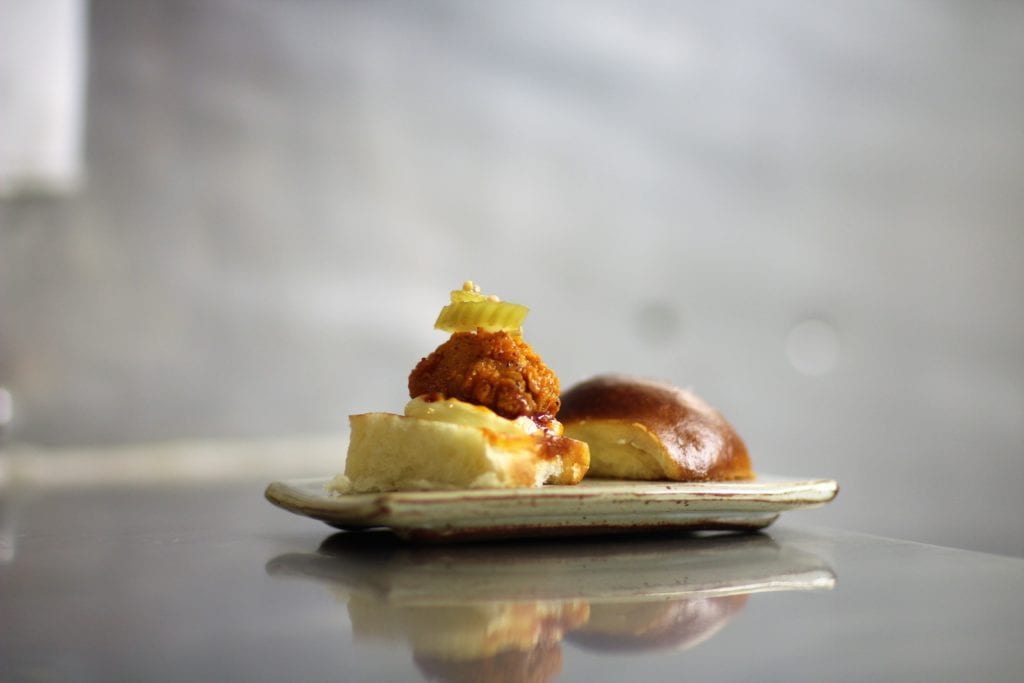
Fruition Denver
Michelin, however, did throw Seidel for a loop with one decision. “One thing I was a little bummed about was maybe the Green Star, if anything. This area is probably where I spend most of my time now – policy talk, access, sourcing, connecting producers and chefs – and I think that’s really what the Green Star is about. So, that was like, ‘Wow. Hmm.’ I thought we led that industry, right?”
Consider Juan Padro an Alex Seidel fan. “Probably the biggest surprise for me with Michelin was Fruition not getting a Star. They made the Recommended List, but Alex Seidel, for me, is one of the best chefs in the country. They deserve a Star next year.”
Barolo Grill, while making the Recommended List, isn’t far from stardom either. Fletter shares, “I do think we have the potential for a Star. Our guests feel that way, but I tell them, ‘We got what we got and we get what we get,’ but I do think what Darrel does and what this restaurant does is One-Star Michelin quality.”
“Darrel” is Darrel Truett, the highly respected and award-winning Executive Chef at Barolo Grill. “I’ve always tried to implement the things into my own food that I’ve learned and seen from these One Star, Two Star, and Three Star restaurants in Italy where our staff goes every year. I’m striving for a Star. That’s what I think our food is worthy of. Our recipe here works. We’ll continue to progress, stay relevant, and keep doing what we’re doing because it’s working and we’re busier than ever. It’s fantastic to be recognized on the Recommended List and to be a part of the Michelin Guide.”
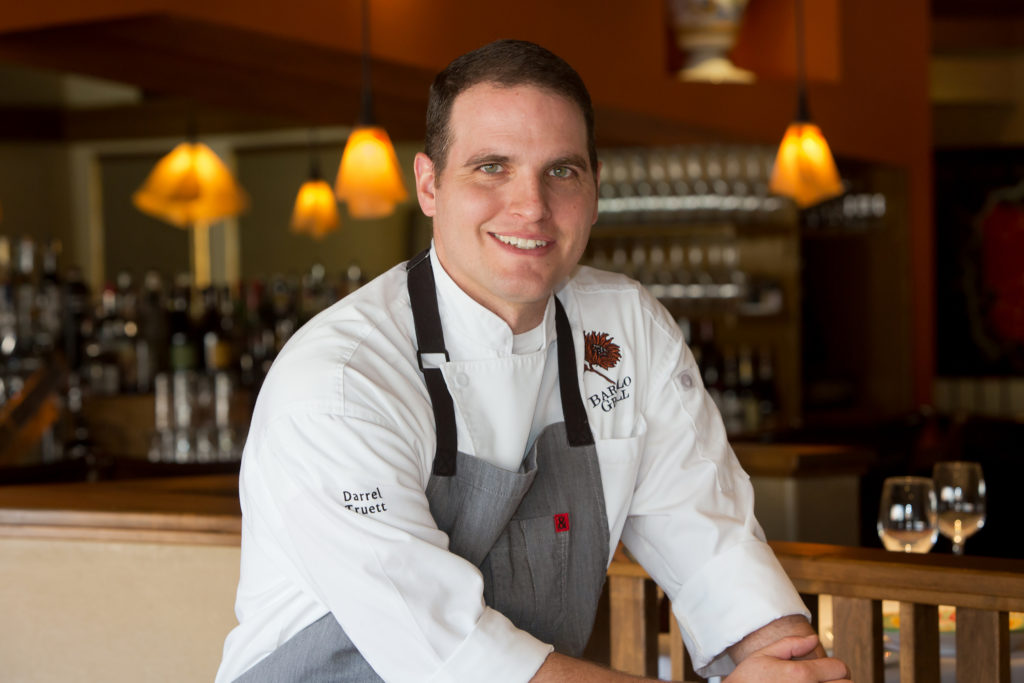
Barolo Grill Chef Darrel Truett
Not only recognized for their fare and service, Barolo Grill also took home a motherlode of an honor with the Michelin 2023 Sommelier Award for Colorado. Well known for their affinity for fine and rare wines, Fletter and sommelier Erin Lindstone’s commitment to one of the best wine lists anywhere is not surprising. What is surprising, at least to Fletter, was winning the Sommelier Award. “I was completely blown away,” he admits matter-of-factly. “There are lots of amazing sommeliers and wine programs in Colorado, so when you get that kind of recognition, it just tells us that we’re doing what we should be doing and that we’re doing it correctly. We’ve been doing this for 30 years, so we’ve been practicing a lot, and we do it all without an agenda, except to serve our guests. It makes it all the more exhilarating and thrilling.”
Speaking of which, the Michelin Guide’s anonymous chief inspector shared the following review for Barolo Grill exclusively with Cherry Creek Magazine. “Barolo Grill is recommended by the inspectors. It has high-quality cuisine, but also excellent service and a thoughtful wine list. In fact, owner/wine director Ryan Fletter and sommelier Erin Lindstone are very knowledgeable and received our 2023 Sommelier Award for Colorado.”
Michelin’s praise for the Culinary Creative Group’s three restaurants elicited some grateful reflection from Padro. “I think Mister Oso and Ash’Kara fit beautifully into that Bib Gourmand category,” he says from a quiet lounge in Cherry Creek North. “Bibs are really good because that’s for the general public to say, “Hey, where do I get the best food for the best value?” I felt we had a shot at the Bibs we won, and I think we had other restaurants that had a shot as well. With A5 Steakhouse (Recommended List), we think the food certainly warrants a Michelin Star, but I think we need to clean some things up and it brought to light some conversations that will give us a better chance in the future.”
Downtown Denver is where you’ll find Troy Guard’s Michelin Recommended List Guard & Grace. Nothing surprises the veteran Guard anymore, indicative with his response. “It was kind of a surprise because you see things in our local magazines and newspapers “Who’s the best? Who does this well? Who does that well?” I try to just let the chips fall where they may, and that’s always treated me well. In the food world, it means so much to so many people – Michelin, James Beard, a New York Post review. It’s very prestigious, and my staff and I are super excited to win something like this.”
As formal and refined as the Michelin Guide is, the process by which they rate each dining experience is anything but. It’s something straight out of a spy novel with its cloak-and-dagger, clandestine nature.
Poullennec explains, “The Michelin Guide has anonymous inspectors, who carry out the fundamental field work. These former hospitality professionals are full-time Michelin Group employees who have at least 10 years of experience in the industry, which ensures that they have a precise and technical knowledge of the field. They also receive extensive training in the Michelin Guide’s methodology. The inspection teams, which include local and international inspectors of various ages and backgrounds, enjoy complete independence in choosing the restaurants they visit. No one can tell the difference between a regular customer and a Michelin Guide inspector. Their identity, when they are visiting, and where they are visiting are all kept secret. They pay their own bills, just as any other restaurant goer.”
Padro shares, “What they do is they email your restaurant, and they say you have eight days to fill out this information and we’re evaluating it. And that’s it. You don’t hear anything else. It’s very anonymous.”
Fletter admits, “We had no idea when they were here or how many times or how often.”
Colorado has earned every bit of this privileged distinction with the Michelin Guide. Troy Guard, for one, is proud of the new state of dining here. “Every year, Denver gets better and better, and you can tell because now you see Michelin coming as well as other bigger restaurateurs coming in. Before, we were a smaller landscape. To me, it brings a certain pat on the back. I like to think I was part of that culinary beginning here.”
And there’s zero chance of seeing the Guide propping up a workbench here in Colorado, so Andre Michelin deserves a pat on the back as well.
-Words by Kevin Marr


